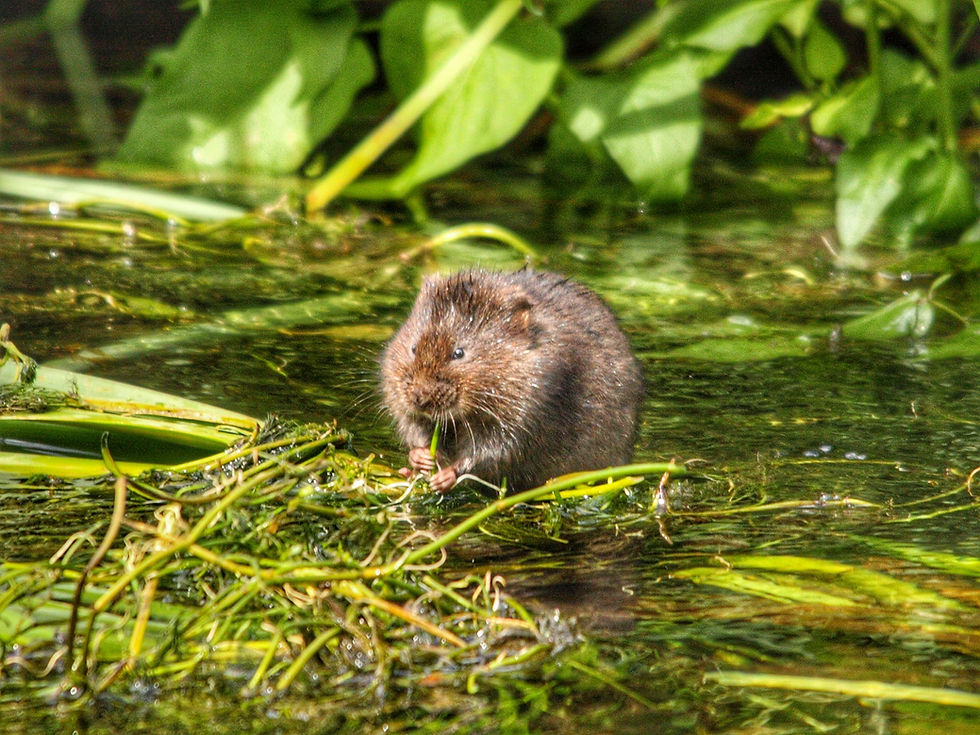MUCH LOVED BUT, OH DEER, ARE WE TOO MANY?
- Dr Mark Collins

- Jun 10, 2024
- 3 min read
The deer population in the Broads has grown rapidly since 2005 and may now be higher than ever, according to experts. There are five species in Norfolk, the Red, Roe, Fallow, Muntjac and Chinese Water deer. These majestic creatures, our largest land mammals, are a sight to behold and are much-loved by visitors, photographers and naturalists. The British Deer Society, an excellent source of maps, identification guides and useful data about their habits, conducts surveys all over the country, and encourages the public to participate.
While naturalists and visitors certainly enjoy spotting deer more easily than was possible in the past, the population change has brought about some unfortunate consequences. Foresters, farmers, gardeners and, sadly, drivers, have noticed the population change for all the wrong reasons - damage to trees and crops; much-loved garden flowers and shrubs eaten before they get a chance to flower, and dead deer on the side of the road, struck by vehicles as they try to cross to pastures new.
Working with the Forestry Commission and English Nature, Andrea Kelly at the Broads Authority supported consultants in carrying out a thermal-imaging drone study in February 2024, mainly at night or in the early morning when most species are active. A ground-breaking workshop in May 2024 attracted more than 60 land managers, conservationists and stalkers who wanted to learn more about managing the impact of deer on the landscape, and perhaps to think about venison as a more regular dietary item. It’s a low-fat meat, becoming easier to obtain and now attracting attention from the Food Standards Agency.

The drone survey flew across 203 sq km, mainly in the northern part of the Broads. It recorded 4,452 deer, giving a high overall density (allowing for certain exclusion areas) of almost 17 animals per sq km. Chinese Water deer were the most common at 1,997 animals – accounting for nearly half of all the deer counted. Red deer were the second most common with 1,172, followed by Muntjac 1,028, and 255 Roe deer. Fallow deer were not found in the survey area. They are widespread in other parts of Norfolk but are rare in the Broads and very secretive.

The Chinese Water deer, well known to many walkers, has no antlers, long protruding canine teeth, and large fluffy ears. Native to China and Korea, it escaped from Whipsnade Zoo in 1929. On a global scale, it is endangered, but about 10% of the world total is now found in the UK, mainly in the wetlands of Bedfordshire, Cambridgeshire, and Norfolk. The species is doing remarkably well in the Broads and is relatively harmless to trees and crops.

Our largest mammal, the stately and indigenous Red deer is the next most common. This and the Roe deer, also native but scarce in the Broads, enjoy woodland and parkland as their preferred habitats but are sometimes seen crossing fields and roads in family groups.

Finally, the Muntjac, or Barking deer, another native of China, escaped or was deliberately released from Woburn Park in Bedfordshire and other stately homes in the early 20th century. Originally a woodland and forest species, it has become a common sight and sound because it visits roadside verges and meadows, as well as gardens and allotments on the edge of towns and cities, where it has become a rather unwelcome pest.

The growing number of deer is a sign of climate warming and environmental change. They have no natural predators in Britain, and our winters often no longer present much of a challenge. Careful management and a modest degree of culling are now the norm, and with new technologies for head counts, this can be achieved sustainably and humanely.
Mark Collins is Chair of the Broads Society. All the photos are by Hans Watson.




Very interesting article. There is hardly a time when I am walking or cycling in the Broads area that I don't see a deer nowadays. As with many other species, be they fauna or flora, sustainable management is the way forward if existing habitats and farmland are to be protected.
Live and let live, I say!
A facinating and informative article. Just last week I came very close to hitting a chinese water deer when driving in Norfolk. I think it would be very good to control numbers and see that as a very enviromental sensitive way to also provide a sustainable way of producing venison